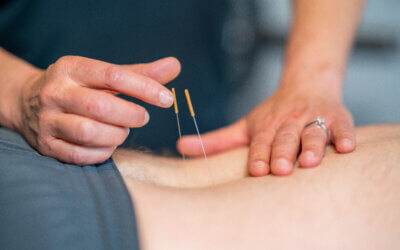In some circumstances, it’s not possible or safe for you to leave your home to receive treatment for your aches, pains and stiffness. Circumstances like the COVID-19 crisis or a debilitating injury can make it risky for you to leave your home. However, none of this means you can’t get the treatment you need for your condition.
Physical therapists can provide telemedicine physical therapy services to help you get the treatment you need from the comfort and safety of your home.
What is telemedicine physical therapy?
Telemedicine physical therapy is a service that connects you and your physical therapist via a live, one-on-one video chat through a secure platform. Using this technology, your physical therapist can guide you through stretches, exercises, posture guidance and other techniques that can help you manage your pain.
Preparing for telemedicine physical therapy
Telemedicine physical therapy might come across as intimidating to some who don’t feel like they’re technologically savvy. No need to worry. There is very little you need to know or do to prepare for a telemedicine physical therapy appointment. All you need is:
- A reliable internet connection — Make sure your internet router and modem are plugged into the power outlet and the Ethernet outlet and that everything is on and operating. If you’re reading this online in your home, then this is a good sign that your internet is reliable!
- A video-capable communication device — Your physical therapist needs to be able to see you to monitor your performance and make adjustments to your routine. You need to have a video-capable device, such as a laptop, smartphone, tablet or a desktop with a web camera.
If you’re using a device that cannot stand on its own, like a smartphone or tablet, make sure you have something sturdy to help prop it up. - Comfortable clothes — You will likely need to perform a variety of gentle exercises and stretches as part of your treatment. Make sure you dress in loose-fitting, comfortable clothes that allow you enough freedom of movement for these exercises and stretches.
- An open space — You’ll need plenty of room for you to move around in for certain exercises and stretches. Make sure you have an open space and that there is no clutter that can cause you to trip or slip. Remove any loose rugs or items from the floor from your treatment space.
Talk to Continuum Wellness about telemedicine physical therapy
Are you ready to stop letting pain control your life and get the treatment you need for it at home? Our team is ready to assist you in your recovery from pain with telemedicine physical therapy. Contact our team today for more information about telemedicine physical therapy or to schedule an initial appointment.



